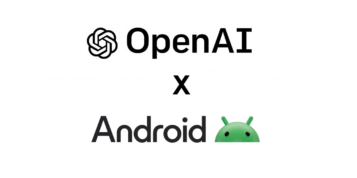For a discipline that’s sometimes seen as “the dull but necessary” part of software development, there have been plenty of steps forward in the testing world. From the proliferation of Agile, which in part seeks to ensure that testing is prioritised right from the outset of the product’s lifecycle, to the use of AI and machine learning in test cases, the ability to match quality with velocity in software releases has improved alongside innovation. In today’s digital landscape, a single bug can cause massive reputational and financial damage making quality assurance of paramount importance.
As we race through the early part 2019, progress doesn’t show any signs of slowing, and in an Agile development cycle, where development and release cycles involve releasing a set of features and extending those sets in iterated releases, testing has become increasingly complicated. This complexity has made automation an unavoidable reality, and it’s here where the industry’s newest innovation “codeless test automation” can really help.
As the name suggests, codeless refers to an approach where test cases are automated with a minimum of code (though, of course, some might be required to handle the critical actions). Next generation codeless test automation still leverages record and playback, but unlike legacy tools that record “static” test cases, and which are prone to break upon any minor change in the app or element within the app, codeless tools are equipped with machine learning and AI capabilities which allow test reusability, provide stability, and call for near-zero test maintenance.
Newly developed codeless tools leverage a modern UI to record stable test scenarios with support for key features like data-driven testing, test assertions and more. In addition, they introduce the concept of a “self-healing” mechanism, which can dynamically detect UI changes in an app, and modify elements on the fly, without needing to change anything in the pre-recorded test.
It’s not a shock that testers are gravitating towards the approach. Almost all teams want to automate, to improve test coverage and increase the depth and scope of tests, but many attempts to do so fail simply because of scripting errors. A codeless approach removes this problem, and helps make a process which is time-consuming and costly, and requires acquired skills, significantly easier.
Let’s look at how teams can capitalise on this new approach, and how can they do so without compromising the more traditional coded mechanisms – which still deliver significant benefits.
An introduction to codeless
The basic premise of “codeless” is a growing force in mass technology. It is liberating the web, and giving power to the people. Codeless platforms such as Wix, Squarespace and Shopify have allowed millions of businesses to create an online presence quickly and effortlessly and led to the incredible expansion of the web.
And it’s this same logic which is now being applied to testing. Instead coding from scratch, codeless test automation allows for quick and simple creation of tests, no coding skills required. It allows QA testers to focus on what they do best: testing.
The potential is significant. Firstly, codeless introduces an opportunity for business testers to join the build cycle, and to capitalise on the continuous testing opportunities which come from automation, as opposed to running fragile manual testing. Indeed, by shifting manual testing into the cycle and automating these tests, the feedback loop and the overall testing activities timeline will dramatically shrink.
Codeless is also more user-friendly. It takes the hassle and frustration out of code-based automation with an intuitive graphical user interface. Test creation becomes faster, and easier to do — putting the power of automation into the hands of manual testers who may not have technical skills needed otherwise. Codeless tools empower users to build robust and reusable test automation by using machine learning and AI algorithms to manage, heal and maintain application objects and elements. And ultimately, combining ease-of-use with test robustness leads to trusted automation that can continuously be executed and deliver consistent results.
Another huge benefit is that the codeless approach provides full host of integrations and features, allowing teams to transform a basic testing platform into an entire testing suite. Finally, codeless facilitates Agile. Now, development teams – anyone from testers, to developers to project managers – can collaborate on the testing process regardless of their abilities and skill sets. This, along with detailed, easy-to-read test reports, keeps everyone on the team on the same page.
Making codeless a reality, living alongside traditional approaches
So how do teams best integrate codeless into their work? Just as with any new way of working, integrating codeless testing calls for a new mindset – and a willingness to change. It’s necessary to adjust workflows in order for codeless to invade the continuous testing landscape, and that takes good leadership, collective motivation and a strategic and comprehensive plan for making the change.
Maturity must be recognised. With the tried and tested traditional approach, there are use cases, best practices, and plenty of opportunities for teams to learn from their colleagues who have done it all before. To adopt a newer approach like codeless, teams have to make a leap of faith. This is why it’s crucial to seek advice and information from trusted third parties and tech experts in order to make decisions on how best to integrate codeless into your software development processes.
So how can it work? Ultimately, codeless needs to be seamlessly integrated into continuous testing processes, sitting alongside, and complementing, scripted tests. Codeless is just part of smart automation – albeit a valuable one.
Codeless testing, just like code-based continuous testing, relies on four key elements to succeed: Creation, Execution, Lab, and Analysis. Connecting test flows to a reliable creation and skillset-matched tool, that can execute the tests reliably at scale from CI or other scheduler against a solid lab (preferably in the cloud), and which then delivers a single pane of glass from a reporting and analysis standpoint, is a significant leap towards mature continuous testing in DevOps.
Indeed, there are still many test cases that traditional code-based approaches will perform best. The benefits of using software testing frameworks like Selenium shouldn’t be overlooked. Selenium is open source, supports plethora of languages, supports cross browser and cross OS tests. It offers flexibility to re-factor tests (allowing quick code changes, reducing duplication and improving maintainability of code), receives constant updates, easy to integrate with different testing Ecosystem (Jenkins, Hudson etc.) and easy to learn and scale – so frameworks like this will remain crucial in testing.
Similarly, there are some cases where codeless fits best. For us, it’s the tests that are inconsistent in the results they deliver, are flaky or failing. Some mobile testing, for example, fits into this category – pop ups create instability, and mobile use is unpredictable. Other test cases that lend themselves to codeless are those which can’t be automated because they’re so complex.
In these cases; whether it’s flaky tests or those which take too much time to maintain, the best approach is to exclude them from the Continuous Integration, make them codeless, then bring them back into the CI at a later stage. In this scenario, codeless automation testing is vital.
—–
So, it is clear that codeless is important – and it’s an innovation which is here to stay. We know that every firm wants to automate testing processes, but attempts to do so regularly fail because scripts are bad or unreliable. And it’s here where codeless can really help.
However, for the foreseeable future, the need for automation coders will not diminish. Indeed, codeless testing will be a tool for automation testers to fast track their jobs rather than replace them. In the future, it’s possible that tools will become smart enough that they will completely eliminate the need for test script coding, allowing testing instructions to be directly passed on to the system in a complete codeless package. But we’re not there yet. Right now, automated functional testing is the most important requirement of any Agile software development process, and codeless is complementary (but important) piece of the puzzle.





